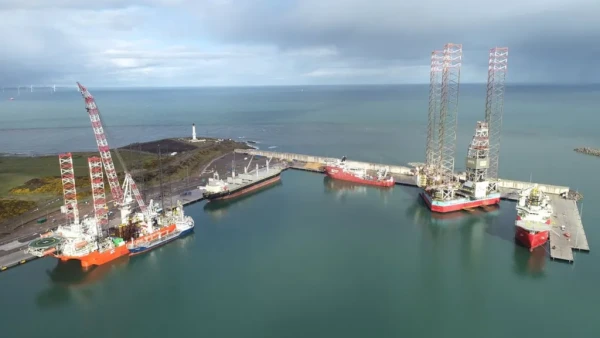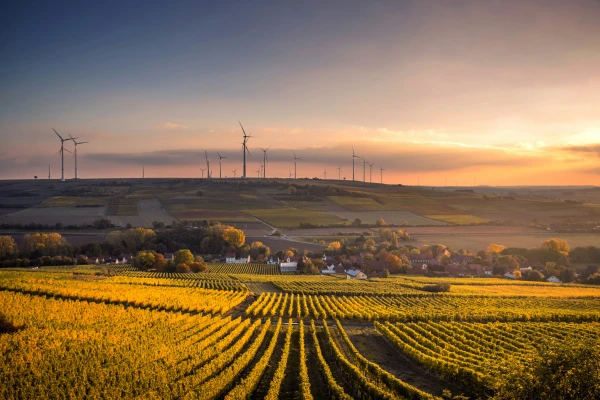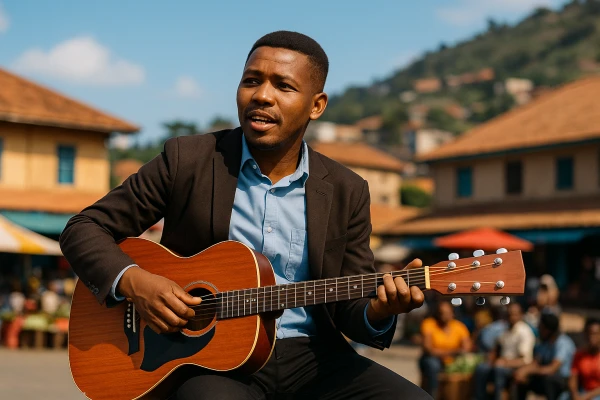Our Views
Climate Finance Trends 2025: New Opportunities for DFIs
Climate finance has grown from a niche topic into a core pillar of development policy. By 2025, every serious conversation about infrastructure, private sector development, or public investment ends up touching on climate – whether explicitly or not.
For Development Finance Institutions (DFIs), this shift is both a challenge and an opportunity. It requires rethinking risk, mandates, and instruments. But it also opens a space to do what DFIs do best: turn complex global priorities into bankable projects on the ground.
In this article, we look at the main climate finance trends we see in 2025 and how they are creating new opportunities for DFIs – drawing on Aninver’s work in blue economy, green investment climate, and resilience-focused programs in Africa, Latin America and the Caribbean.
1. From “green projects” to climate-aligned portfolios
One of the clearest trends is the shift from financing a handful of flagship green projects to climate-aligning entire portfolios.
For DFIs, that means:
- Screening all operations for climate risk and impact.
- Setting portfolio-level mitigation and adaptation targets.
- Gradually phasing out support to projects inconsistent with Paris Agreement goals.
In practice, this is pushing DFIs to integrate climate lenses into sectors that were not traditionally seen as “green”: tourism, digital, urban regeneration, or even tax systems.
We see this first-hand in assignments like the Green Investment Climate Diagnostic in The Gambia, where climate considerations are now central to how agribusiness, tourism and waste management reforms are prioritized. What used to be a conversation about “doing business” is now equally about resilience, emissions and resource efficiency.
For DFIs, this portfolio logic changes the question from “Do we have some climate projects?” to “Is every project climate-robust and climate-relevant?”
2. Adaptation and resilience finally coming to the forefront
Mitigation investments such as renewables and energy efficiency still attract most of the global attention, but 2025 is clearly the year when adaptation and resilience move closer to centre stage. This matters for DFIs because adaptation is usually more locally specific, more policy-intensive and far harder to monetize than a solar plant or a wind farm. Yet the demand is enormous: smallholder farmers facing erratic rainfall, coastal communities exposed to storms, or water utilities struggling with drought all need investment and technical support that traditional commercial finance tends to overlook.
Aninver’s work on the Family Agriculture Technical Assistance Project in Panama’s rural Region 1, and on agriculture, land degradation and fragility in the G5 Sahel, reflects exactly this shift. These interventions are no longer seen as purely rural or purely social; they are adaptation programmes, helping communities manage risk through better extension services, climate-smart planning and more resilient value chains. For DFIs, the opportunity is to blend concessional and commercial funds in climate-resilient rural programmes, support governments to design results-based schemes that reward resilience outcomes, and develop new metrics that capture avoided losses as well as new assets built.
3. Nature and the Blue Economy as investable climate assets
Another strong trend is the growing role of nature-based solutions—forests, wetlands, mangroves, seagrasses—as recognised climate assets. In coastal and island states this is translating into rising interest in the Blue Economy and in emerging blue carbon markets, where DFIs are uniquely placed to help governments and private actors move from concept to implementation.
In the Caribbean, we see this very clearly. In Belize, we support the Government and partners in building a comprehensive Blue Economy strategy and communication approach, clarifying who does what and how investment can be mobilised around marine tourism, fisheries and conservation. In Trinidad and Tobago, we are working on the design and training for a high-quality blue carbon credit scheme, where mangroves and seagrasses are treated as assets that generate measurable, verifiable climate benefits.
These projects show what DFIs can do differently in 2025: bring technical credibility to new market mechanisms such as blue carbon, resilience bonds or nature-linked funds; finance the upfront analytics, MRV systems and institutional frameworks that make nature-based investments bankable; and then crowd in private capital once rules and baselines are clear. The upside is not only environmental. When coastal communities see that healthy ecosystems translate into jobs, incomes and potential carbon revenue, climate policy becomes far easier to sustain politically and socially.
4. Blended finance becoming more targeted (and more demanding)
Blended finance is no longer just a generic mix of concessional and commercial money. In 2025, DFIs are under much greater pressure to demonstrate additionality—to show that concessional resources genuinely unlock projects that would not otherwise happen. That means using first-loss tranches or guarantees more selectively, aligning pricing with clearly defined climate and development outcomes, and combining finance with deep policy dialogue and project-preparation support.
In PPP-type operations—from hospital projects in Spain to transport and energy PPPs in Latin America—we see blended finance working best when three pieces are in place. First, the public side has a clear vision of what it wants, with realistic risk allocation and service standards that make the project attractive to serious partners. Second, climate goals are fully embedded in the design, whether through efficiency standards in hospital buildings, renewable supply options, or resilient infrastructure layouts. Third, DFIs position themselves at the intersection, using concessional funds to improve bankability while helping governments manage long-term fiscal and climate risks. The opportunity now is to move away from one-size-fits-all “green windows” and towards tailored blended solutions that reflect sector-specific risks, country capacities and explicit climate objectives.
5. Data, taxonomies and the “plumbing” of climate finance
Behind every climate project there is an increasingly dense layer of data, taxonomies and reporting requirements. What used to be an optional annex in a project document is now central to eligibility for many funding sources. Countries are adopting green or sustainable finance taxonomies, developing national MRV (Measurement, Reporting and Verification) systems, and aligning with regional disclosure standards. This technical “plumbing” quietly determines which projects can access which pools of capital.
In our work on investment climate diagnostics and on digital solutions for regulators—for example, the digital transformation strategy for Peru’s water regulator OTASS—we see how robust information systems and clear classifications make it easier to track climate-related spending and attract new financing. For DFIs, this opens a significant opportunity to fund data systems, registries and taxonomies as core infrastructure; to support regulators and ministries in building credible pipelines aligned with those frameworks; and to simplify reporting for sub-sovereign entities, cities and SMEs that would otherwise struggle to comply. Good data does more than satisfy donors; it builds trust with private investors who need clarity on what counts as green, resilient or transition finance.
6. Climate finance closer to SMEs and local ecosystems
Finally, 2025 is bringing a stronger push to ensure climate finance reaches SMEs, startups and local ecosystems, not only large infrastructure sponsors. This shift is especially visible in digital and creative sectors, where new business models can accelerate low-carbon growth; in tourism, where small operators are adapting to climate shocks and evolving markets; and in agriculture, where cooperatives and small processors are central to building resilience.
Aninver’s recent work in The Gambia—from strengthening the digital entrepreneurship ecosystem, to designing a national digital tourism strategy, to delivering digital skills training for MSMEs—shows how climate and digital agendas increasingly overlap. A more connected, data-literate SME base is better placed to adopt climate-smart practices, access green finance and participate in emerging value chains. DFIs can play a catalytic role by working with local financial institutions to design green SME credit lines and guarantee schemes, by funding accelerators and ecosystem builders that connect climate solutions with business mentoring, and by ensuring that gender and inclusion are built into programme design from the start. Initiatives such as Fashionomics Africa, where women-led creative businesses are central to low-carbon, job-rich growth, offer useful inspiration for what this can look like in practice.
Where DFIs can add the most value
Across all these trends, the comparative advantage of DFIs is not just money. It is the ability to blend finance with policy dialogue, technical advice, and learning.
From our perspective at Aninver, the most impactful climate-related programs we’ve worked on share a few features:
- They invest in institutions and ecosystems, not just physical assets.
- They combine analytics, strategy and capacity building with financing.
- They deliberately connect global agendas (Paris, nature, SDGs) with local priorities and livelihoods.
Whether in a blue carbon program in the Caribbean, a creative industries strategy in Rwanda, or a rural resilience initiative in Latin America, DFIs are at their best when they help governments and private actors navigate this complexity – turning climate goals into coherent pipelines of bankable, socially grounded projects.
For DFIs looking ahead to 2025 and beyond, the message is clear: climate finance is no longer a niche product line. It is the lens through which development finance as a whole will be judged.
Want to go deeper?
If you’re interested in how these trends play out in real-world operations, we invite you to explore some of our recent and ongoing projects related to climate, resilience, and sustainable growth:
- Green Investment Climate Diagnostic (GICD): Policy and Regulatory Barriers in The Gambia
- Blue Economy Analysis in Belize
- High-quality Blue Carbon Credit Scheme design and training in Trinidad & Tobago
- Rural agriculture and resilience programs in Panama and the G5 Sahel
These and other assignments illustrate how climate finance can be translated into practical solutions – and how DFIs, governments and private partners can work together to turn ambition into implementation.










